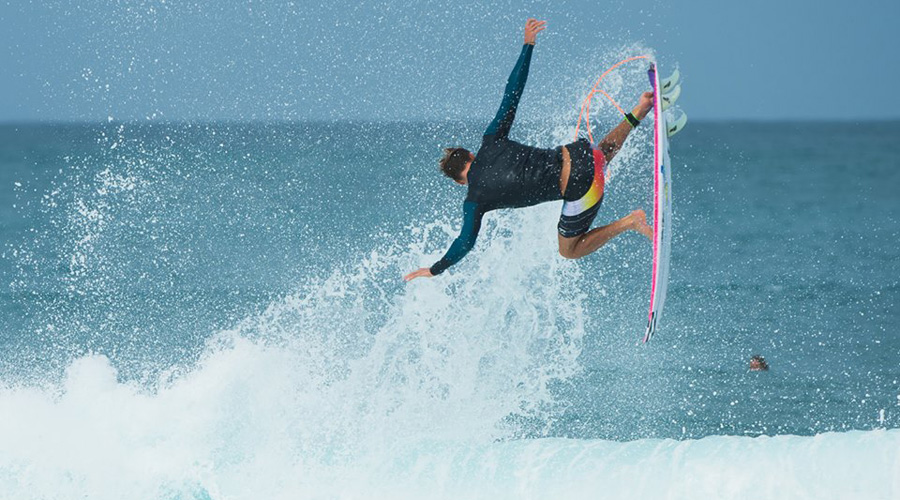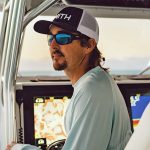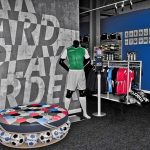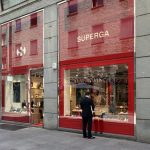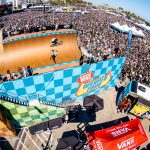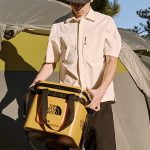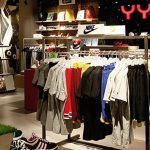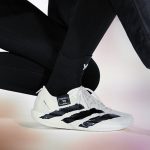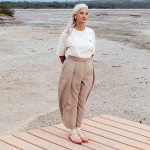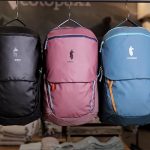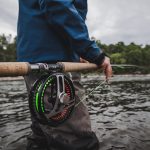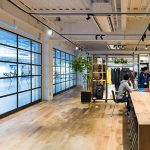Billabong International Ltd. continued to make progress last year with all three of its core brands (Billabong, Element and RVCA) seeing growth and expanding share in key markets. But a number of external factors – including currency headwinds, retail disruption marked by a number of bankruptcies and a shift away from longboards – continued to frustrate its turnaround efforts.
The Australian surf giant lost AUD$23.7 million ($18 million) in its year ended June 30 versus a gain of AUD$4.2 million a year ago.
More than two-thirds of that decline is related to a AUD$20 million ($15.2 million) accounting charge for tax this year. As a result, the company incurred tax expense of AUD$7.8 million ($5.9 million) this year compared to a AUD$12.2 million tax credit a year earlier.
But EBITDA (earnings before interest tax depreciation and amortization), excluding significant items and discontinued operations, was still down 12.5 percent to AUD$57.5 million ($43.7 million) versus the same period a year ago.
“We have come through a year of extraordinary market disruption and dislocation, in many ways stronger, leaner and more focused, yet clearly impacted by a number of factors outside of our control,” said Neil Fiske, CEO, on a conference call with analysts. “Fundamentally, we believe our strategy is working and we are generally satisfied that the things that are within our control have been well-managed.”
Among the highlights, EBITDA grew in Europe for the third consecutive year. In the Americas, inventory has been reduced by $20 million in the last six months and is now largely back in line with the prior period, while the second half showed some pickup after a tough first half. Comp gains were also seen in every region last year, cost structure was further reduced, and progress was made in simplifying and narrowing business focus.
“We have said repeatedly that progress and a turnaround of this nature is not necessarily going to be linear and that we expect there will be ups and downs along the way,” stated Fiske. “The unusually volatile conditions of the last year make that doubly true.”
External Pressures
Specifically, Fiske pointed to three “external shocks” that particularly impacted results.
First, the Australian dollar relative to the U.S. dollar started its fiscal year at AUD94 cents, and by January 2016 had hit a low of around AUD69 cents. The euro likewise eroded from AUD$1.33 at the start of its fiscal year 2016 to a low of AUD$1.05 during the fiscal year. Since Billabong pays for its products in U.S. dollars, currency movements raised its cost in fiscal 2016 by AUD$17 million ($12.9 million) in the Asia Pacific and Europe regions compared to the prior year. It was only able to offset part of that impact. Explained Fiske, “We expect to ultimately recover from these increases but it takes time for markets, prices and product designs to adjust.”
Second, the bankruptcies of Pacific Sunwear, Sport Chalet, Sports Authority and Quiksilver, among others, impacted sales and margins. At the same time, a number of the large action sports chains experienced comp sales declines and pulled back on orders to get inventories in line.
Finally, a sharp contraction in the longboard segment of the skateboard market led to a 37-percent sales decline at Sector 9 and a drop of AUD$4.5 million ($3.4 million) EBITDA in the Americas region. Sector 9 was sold in June as part of a narrowing of focus on its big three brands.
Fiske noted the company’s second-half EBITDA result would have been almost flat if Sector 9 was excluded from both years, marking some recovery from the first-half trend.
Companywide, revenues for the year were up 4.6 percent to AUD$1.1 billion ($836 million) and down 1.4 percent on a currency-neutral basis. The decline was in part due to ongoing efforts to rationalize its store base and exit some smaller brands. Non-core brands it continues to own include Kustom, Palmers, Honolua, Xcel, Tigerlily and Von Zipper. External wholesale revenue for its big three brands grew 2.8 percent on a currency-neutral basis. Including wholesale equivalent sales supporting its own retail operations, external wholesale revenues grew 5.3 percent on a currency-neutral basis.
Americas Lagging
By region, EBITDA in the Americas before global allocations declined 24.2 percent to AUD$31.6 million ($24 million) and was off 30.6 percent on a currency-neutral basis. The second half showed improvement, down AUD$4.7 million ($3.6 million) versus AUD$9.2 million ($7 million) in the first half.
Total sales for the region were up 6.5 percent to AUD$481.3 million ($365.8 million), but down 3.2 percent on a currency-neutral basis.
Among its big three brands, RVCA was the strongest performer in the Americas, increasing 14.9 percent in wholesale-equivalent sales during fiscal 2016. Element and Billabong were relatively flat year on year on that same basis.
Retail comps in the Americas region were down 6 percent due to declines in tourist traffic in key cities because of the strong dollar, officials said. Encouragingly, apparel has been growing in the Americas on a comp basis, supported by growth in its women’s offerings. E-commerce grew 24.9 percent and now stands at 5.7 percent of the region’s total sales. Total comps were flat for the region.
The strongest regional performance came in Europe, which saw EBITDA before global allocations climb 49.3 percent to AUD$16.9 million ($12.8 million) and grow 39.7 percent on a currency-neutral basis. Revenues in Europe grew 8.4 percent to AUD$192.7 million ($146.4 million). Sales advanced 2 percent on a currency-neutral basis, although they were flat in the second half due to unseasonal weather conditions.
In the Asia Pacific region, EBITDA before global allocations was down 10 percent to AUD$38.8 million ($29.5 million) and off 12.4 percent on a currency-neutral basis. Total revenues in the Asia Pacific region were down 1 percent to AUD$423million ($321.5 million) and off 0.8 percent on a currency-neutral basis. Comp-store sales were down 1.7 percent for the year in the region.
Among its brands, Billabong brand’s sales grew 1.9 percent last year, RVCA jumped 18.1 percent and Element added 5.3 percent.
Worldwide Brand Sales
In the core surf specialty channel, the Billabong brand and RVCA both gained market share. The Billabong brand again widened its lead as the No. 1 brand in surf specialty channel in both Australia and the U.S. Said Fiske, “It’s a strong brand getting even stronger, with better product ranges, more focused youth marketing, a stronger athlete team, a powering women’s business, elevated creative and consistent execution around the globe.”
Social media efforts are also paying off for the Billabong brand, with followers growing 16 percent to 9.7 million with an additional 2.7 million followers for its athletes and advocates.
RVCA’s double-digit growth reflected growth of 14.9 percent in the Americas and 40.5 percent in Asia Pacific. Europe, off a smaller base, was up 24.6 percent. Said Fiske, “Importantly, RVCA performed strongly in our own retail in every region, underscoring again that this is a brand with global appeal and untapped potential.”
RVCA likewise saw a jump in social media followership, up 22 percent for the year, and the brand continues to benefit from its unique artist network program. With athletes and advocates, brand followers total 3.2 million. Other highlights for RVCA include a strong opening of a store in Byron Bay in Australia, and growth of over 30 percent in women’s. Said Fiske, “While there is some turbulence and uncertainty to overcome in the U.S. market, looking forward, we see many avenues for RVCA to continue its growth, geographies, categories and new or underdeveloped channels.”
Element’s growth was led by a 14.7 percent increase in its biggest market, Europe. Americas was flat as a 5.2 percent gain in full-price wholesale sales in men’s was offset by weakness in women’s.
“The good news is that skate culture is surging as a major influence in women’s fashion,” said Fiske. “We have positioned to capitalize on the trend as our assortments and marketing align to the brand repositioning.”
Element’s social media outreach grew 31 percent in the last year, to 9 million followers. Fiske said athletes such as seven-time X Games gold medalist Nyjah Huston continue to drive Element’s profile. He also expects the brand’s global appeal to expand with skate joining surfing in the 2020 Tokyo Olympics. The skate brand also saw a “phenomenal” opening of a store in Boise, ID next to a major skate park. He stated, “It was a powerful affirmation for the brand and a testament to the strength of local skate communities.”
Looking Ahead
For the current fiscal year, the focus will be on building a “best-in-class omni-channel platform,” officials said. Related investments include upgraded websites, a mobile point-of-sale system that can customize outreach to individual customers and a new planning and allocation system to better segment product by stores.
The other priority will be overhauling its supply chain through Project Pipeline. Optimizing its network globally and rationalizing its regional footprint is expected to reduce logistics cost by $10 million annually. Ongoing priorities include improving gross margins and securing efficiencies around costs and organizational productivity.
Given the changes in the market and the softness in some of the larger chain retailers, revenues and inventories are being planned “more cautiously” in the current fiscal year. But Fiske said the company will continue to have an “ambitious agenda” for the current year and remains “poised to become even more competitive and profitable in the coming years.”
“This is an industry in transition,” Fiske added. “Winners will be those with global brands, tight quality distribution and a powerful omni-channel capability. Our strategy and our efforts align to these critical success factors.”
Photo courtesy Billabong

